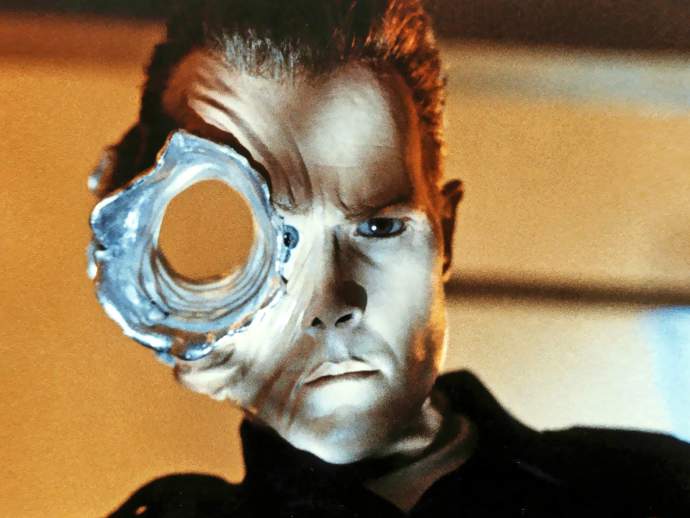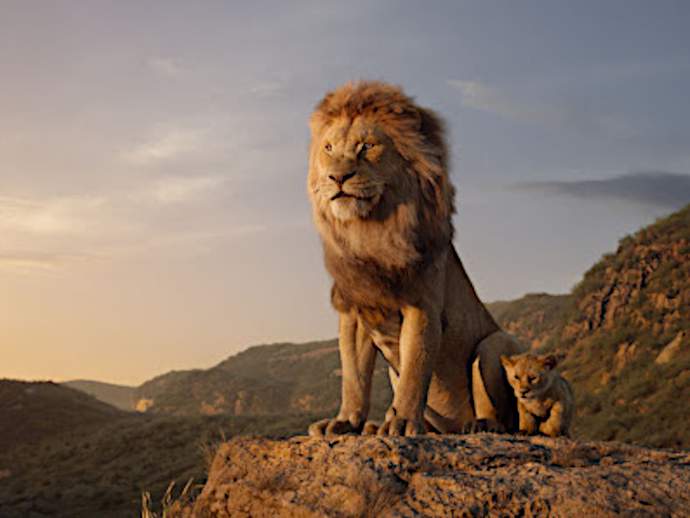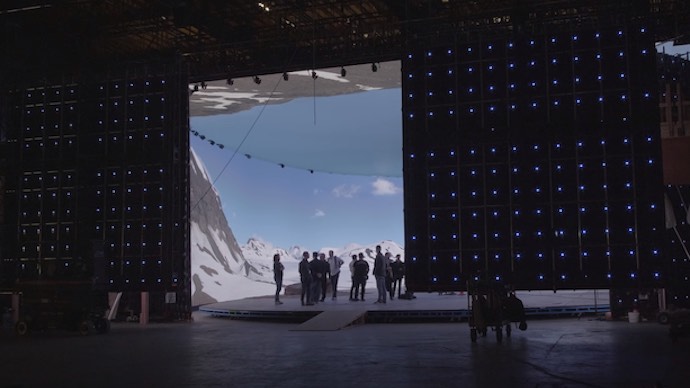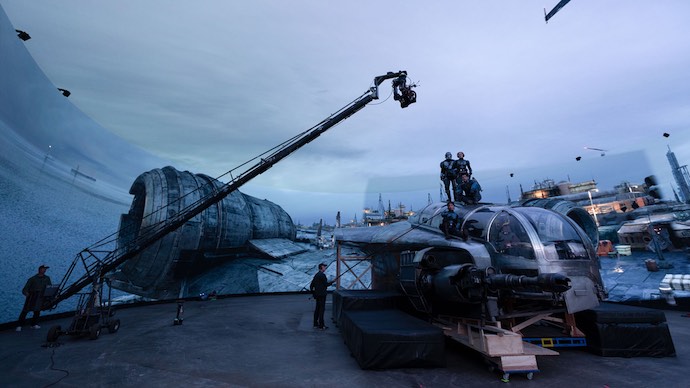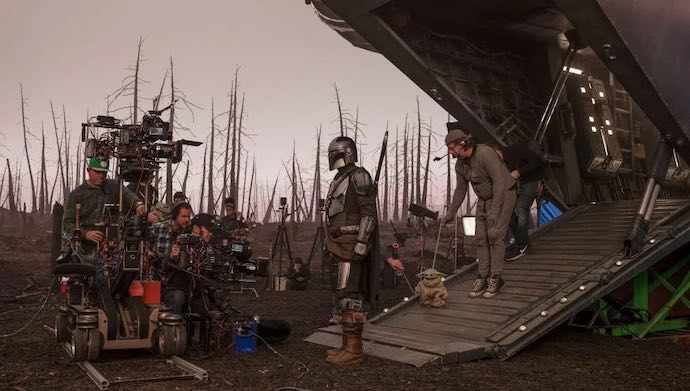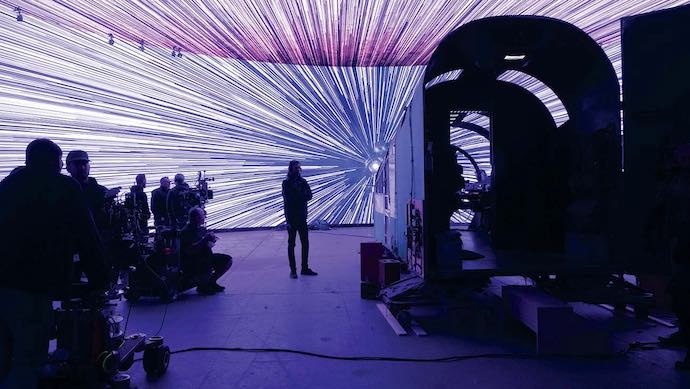To understand why it was so momentous, we first have to jump back to the production of James Cameron’s Terminator 2: Judgment Day. In early 1990, James Cameron—who’d previously worked with Industry Light & Magic (ILM) on The Abyss—asked ILM to produce a special effect they’d never done before: a character of liquid metal. ILM’s VFX specialist Dennis Muren told Cameron over the phone that ILM could provide the effects Cameron wanted. But privately? He wasn’t entirely sure they could. After ten months of tireless work with a team of VFX experts, Terminator 2: Judgment Day arrived in cinemas and featured special effects that fundamentally shifted the future of filmmaking production. Since then, CGI visual effects dominated big-budget filmmaking, with movies like Jurassic Park, Star Wars: The Phantom Menace, Avatar, and Dune all following in the footsteps of Terminator 2. Fast-forward to 2019, when Jon Favreau started work on his new Star Wars TV series, The Mandalorian. He’d previously worked with ILM on The Lion King, for which ILM developed a technique that allowed Favreau to shoot sequences inside a virtual world. With The Mandalorian, Favreau asked ILM if they could use that same principle for live-action filmmaking, which would involve putting real-time rendered effects on huge screens surrounding actors. As before, ILM said they could do it—but weren’t entirely sure they could pull it off. The result was called The Volume, which was the technical name for the soundstage built for StageCraft. It can encompass a 360-degree world around a scene, including the sky above, and use the light source in that virtual world as a light source for lighting the actors on set. Upon completion of principal photography—after they’d built dense CGI sets inside a virtual reality system using VR technology developed with Epic Games—Jon Favreau and his team proved the viability of this new filmmaking technology that would render green screens obsolete. As the industry moves forward to adopt ILM’s StageCraft, here’s my own look at how this tech will impact TV and movies.
1. Shoot Foreign Sets Locally
With StageCraft, the need for a green screen to impose images in post-production is now obsolete. This is the reason why ILM, Jon Favreau, Disney, and Epic Games all backed the technology. But as George Clooney showcased in The Midnight Sky, StageCraft also negates the need to change locations while shooting. In modern filmmaking, this has its advantages and disadvantages. Many like the realism of location shooting, which is something that StageCraft can never truly replicate. But when it comes to alien worlds, spaceships, and fantastical effects, StageCraft represents a new way to create those locations and effects in rich detail. While certain visual effects can only be done and applied in post-production, StageCraft’s virtual reality function allows producers and directors to carefully inspect their “locations” ahead of time. Jon Favreau and Robert Rodriguez spoke about the technology’s ability to change entire details in seconds to fit their directorial vision, and shared the virtual sets from two different parts of the US to illustrate.
2. Act and Perform With Real Props
Performing in front of a green screen—which forces you to imagine everything happening according to the director’s words—can be draining for actors. That’s why Ewan McGregor spoke of his fondness for the StageCraft technology ahead of his return as Obi-Wan Kenobi. McGregor told interviewers that he enjoyed and vastly preferred the filming process on the series than on the original film trilogy because StageCraft allowed him to physically see what he’s doing and what he’s interacting with before his eyes. This is one of the strengths of StageCraft: it can elicit better performances from actors in relation to the world around them. The days of green screens and blue screens are now numbered, with ILM building Volumes in Los Angeles, London, and Australia—something most actors will be pleased about since their on-set experiences will be much better with StageCraft’s existence.
3. Reduced Costs of Production
The expenditure involved in taking a crew to remote locations to shoot arduous scenes can be expensive for any studio. For truly artistic movies that span many locations, big budgets have always been required. With StageCraft, the cost of film production is dramatically reduced. There’s no need anymore to hire huge crews for location scouting, permit acquisitions, accommodation bookings, travel expenditures, etc. It’s all vanquished by the magic of StageCraft. The technology, in theory, could save vast sums of money that would be better spent on financing smaller pictures, newer filmmakers, and those who have diverse ideas for the film industry.
4. Quicker Production and Post-Production
There are many natural obstacles to filming on location, including threats of weather, timing daylight, and managing interference from locals. It all has an effect on how well a film crew can get through a shoot, and how much they can truly get done in 24 hours. With StageCraft, more filming can be accomplished in a single day, and more can be done during filming itself rather than offloading it to post-production teams and waiting for them to finish. No more waiting around for the exact time of day for the exact kind of lighting you need for a specific type of scene—and if you can’t get it all filmed, you have to wait again for that time of day tomorrow. No more postponements due to rain delays, other inclement weather events, film crews lost in a city, delayed city permits, interruptions by stray locals breaking onto set, etc. One season of a TV series like The Mandalorian would have taken anywhere from six to nine months before StageCraft, which is about the same amount of time it’d take to shoot a Star Wars movie. Now, with the level of production control afforded by StageCraft, development time is cut down to a mere four months. With fully rendered effects in place, the post-production process is much faster as well. Sped-up production time without sacrificing quality is arguably the biggest draw of StageCraft. Will every single production choose StageCraft going forward? Of course not. But when the benefits of a new filmmaking technology like this are so great, it’s a no-brainer to expect many big-budget movies and TV series the use StageCraft going forward. Read next: The best cinema and filmmaking documentaries
